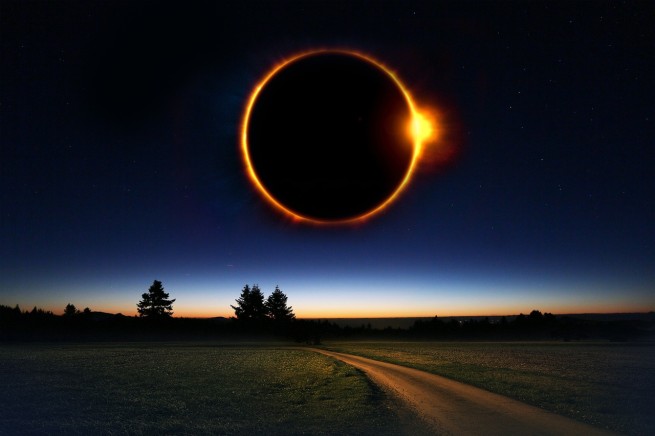On Monday, April 8, much of North and Central America will have the opportunity to see the Moon pass in front of the Sun and obscure it during a total solar eclipse.
The rare astronomical phenomenon will be seen by millions of people in parts of North America, Mexico and Canada. It will start from the South Pacific. Areas of Mexico will be watching from the Pacific coast. The eclipse's path will cross Mexico and continue into the United States through Texas, the northeast, and then into Canada.
When the black disk of the Moon takes the place of the Sun, the sky will darken, as at dawn or dusk, and viewers will have the opportunity to observe the solar corona – the outer atmosphere of the Sun. This phase can last up to four minutes. Outside the path of the total solar eclipse, residents of neighboring areas will be able to see partial solar eclipse.
According to NASA, approximately 31.5 million people live in the path of the eclipse, with a total of more than 300 million will have the opportunity to view the partial eclipse.
NASA has scheduled a live broadcast of the eclipse from 20:00 pm (Greek time). The solar eclipse can be observed on the website https://www.nasa.gov/nasatv/ with comments and on the YouTube page https://www.youtube.com/watch?v=J5j95RUSLd8 with images transmitted from telescopes.
Groups of professional and amateur astronomers, astrophotographers and eclipse hunters from all over Greece are preparing to travel to the USA and Mexico to observe and study an impressive astronomical phenomenon.
Among them is the astrophysicist of the Center of the National Observatory of Athens in Thisio Fiori-Anastasia Metallenou, who will travel to Durango, Mexico, together with members of the Astronomical Union of Sparta “Dioskouri”.
The eclipse will have a total duration of two hours and 41 minutes and a total duration of three minutes and 47 seconds. As Ms. Metallenou APE-MPE explains, in 2024 the Sun will reach its maximum activity, so all phenomena appear more intense. “So during this eclipse, weather permitting, we hope and expect to see more intense solar events such as flares and protrusions. Even the solar corona will be more intense in observations and measurements, as well as in photographs.”
She highlights another interesting aspect of this total eclipse: it comes 18 years after the 2006 total eclipse, which was visible from Kastellorizo. The next total solar eclipse is expected on August 12, 2024, and will be visible from Iceland, Portugal, Russia and Spain.







More Stories
Who likes an adventure holiday?
Identification of Ukrainian pensioners-2024: 4 ways to avoid being left without money
Almost 6 out of 10 Greeks watch TV or videos on the Internet. How are things going in Europe?